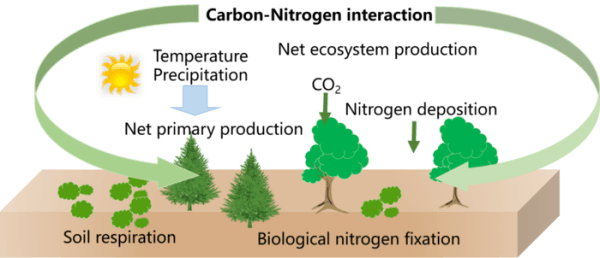The Belt and Road initiative, comprising countries in regions such as eastern Asia, central Eurasia, northern Africa and western Europe, is a key region for estimating the carbon sink trends under the target of carbon neutrality. Climate change, atmospheric CO2 concentrations, biological nitrogen fixation, and anthropogenic nitrogen deposition could all influence the trends in net primary production, soil respiration and net ecosystem production.
According to a new research published in Atmospheric and Oceanic Science Letters, the effects of climate change, elevating atmospheric CO2, and increasing biological nitrogen fixation and anthropogenic nitrogen deposition are expected to affect the carbon sink trends of the Belt and Road region in the last 70 years of the 21st century. For example, enhanced surface air temperature and atmospheric CO2 can both stimulate net ecosystem production. On the one hand, through rising CO2 concentrations, net primary production may be promoted, and more carbon can be sequestered. On the other hand, increasing temperatures can stimulate soil respiration and promote carbon release. The combined strength of the two will determine the direction and strength of the net ecosystem production trend. Currently, however, the direction and magnitude of net ecosystem production trends and their responses to climate change, atmospheric CO2 concentrations, biological nitrogen fixation, and atmospheric nitrogen deposition are
controersial.
Dr. PENG Jing from the Institute of Atmospheric Physics, Chinese Academy of Sciences, and colleagues, simulated the response of net primary production, soil respiration and net ecosystem production in the Belt and Road region to global changes from 1901 to 2100. Assuming a business-as-usual emissions scenario in the future (namely, RCP8.5), the net ecosystem production trend decreases by 0.04 Pg C yr-2 from 2031 to 2100 relative to historical levels (1936–2005).
Read more at: Institute of Atmospheric Physics, Chinese Academy of Science
Schematic diagram of the underestimation of the carbon sink trend across the Belt and Road region during 2031–2100 (Photo Credit: PENG Jing)


